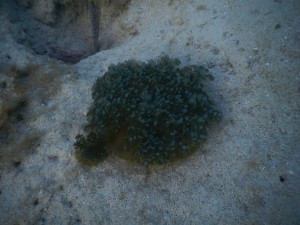This morning, we went to the Belize Zoo to see everything in the daylight. In addition to the animals we saw last night, we also saw a jaguarundi and a harpy eagle. Fun fact: harpy eagles look exactly like hippogriffs from Harry Potter! We then drove to Belize City to catch a boat to Glover’s Reef.
The boat ride to Glover’s was incredible. As we sped across the ocean, the water flashed vivid colors of blue, teal, and green. At one point, the boat stopped and we couldn’t see land in any direction. The Glover’s research station is beautiful. We are living in cabins on stilts overlooking the ocean. It’s also interesting to look at the differences in resources between Las Cuevas and Glover’s. Las Cuevas had limited generator power, but plenty of water pumped from a nearby cave. Glover’s has 24-hour electricity, but rainwater is the only water source on the island for drinking and bathing.
We went for a quick swim before dinner to test out our snorkel gear. I saw several species of red algae, but was only able to identify Laurencia papillosa without my id guide. We also saw a ray and lots of colorful fish. After dinner, we built our quadrats that we will use to do reef research tomorrow.




















